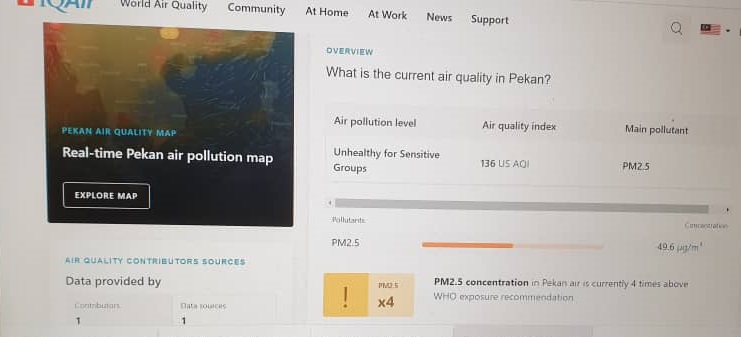
SUBANG JAYA, July 9 – People living in the areas of Shah Alam, Pulau Indah, and Kuala Langat have been subjected to poor air quality since last week, based on the Air Pollution Index and particle matter concentration (PM2.5) in the air in these areas.
Some of these areas have also reported fire. In Kuala Langat, a peatland fire has been ongoing for sometime now, an official from the Department of Environment confirmed, when Weekly Echo called to check on the appearance of hazy skies that have greeted sky watchers from these areas.
While industrial activities and other non-essential factory activities have been stopped and vehicle emissions should have significantly dropped with the reduced traffic on roads following the Movement Control Order (MCO), the PM2.5 readings of some of these areas just don’t indicate a parallel drop in pollution.
Apart from Selangor, towns such as Pekan in Pahang have also recorded high concentration of PM2.5 in the air in the recent days. The readings may have come down following rain and storm in these areas, however, in Pekan, the PM2.5 reading was at 49.ug/m3 on Friday, which is said to be four times above WHO exposure recommendation.
PM2.5 refers to particles that are 2.5 micrometers in diameter or smaller. Unlike PM10, PM2.5 particles are not visible to the naked eye – they can only be seen with an electron microscope. PM2.5 particles are considered among the most dangerous airborne pollutants because of their small size. PM2.5 can stay airborne for indefinite amounts of time, and when inhaled, PM2.5 can penetrate lung tissue and enter the bloodstream, causing heart, respiratory, and brain damage.
Soil dust, soot from fire, power plants and vehicle emissions are among the pollutants to contribute to high concentration of PM2.5 in the air.
A total of 109 fires/hotspots was detected in Malaysia this past week, according to data from NASA FIRMS, and these could indicate either forest fires, open burning or heat from industrial activities. While the rain the last two days could have brought some respite, the air quality in some areas are questionable and more vigilance is needed from the authorities who are responsible for these areas.
With more episodes of Movement Control Order (MCO) and full lockdowns, blue skies and clean air should at least be the blessings in disguise as the fight continues against the COVID-19 pandemic.
–WE